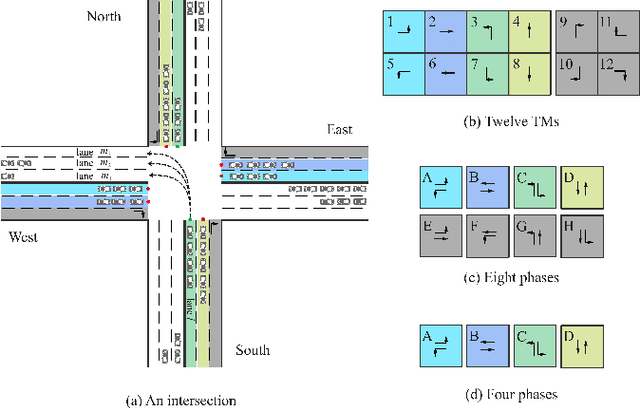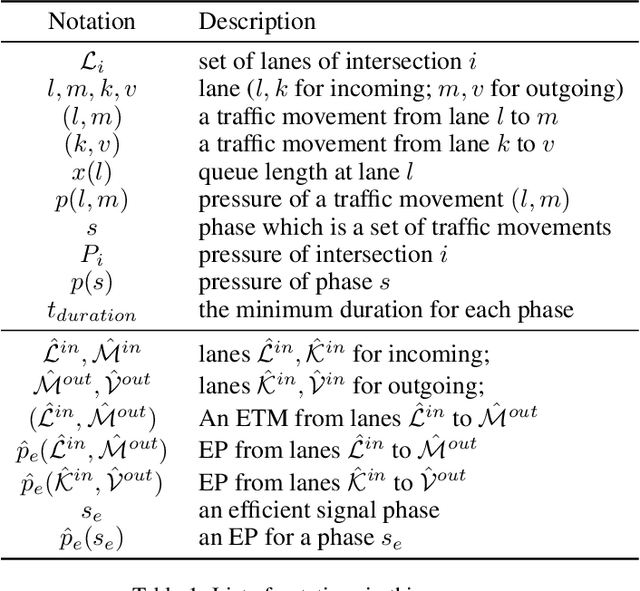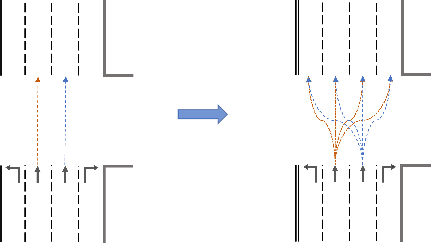Efficient Pressure: Improving efficiency for signalized intersections
Paper and Code
Dec 04, 2021



Since conventional approaches could not adapt to dynamic traffic conditions, reinforcement learning (RL) has attracted more attention to help solve the traffic signal control (TSC) problem. However, existing RL-based methods are rarely deployed considering that they are neither cost-effective in terms of computing resources nor more robust than traditional approaches, which raises a critical research question: how to construct an adaptive controller for TSC with less training and reduced complexity based on RL-based approach? To address this question, in this paper, we (1) innovatively specify the traffic movement representation as a simple but efficient pressure of vehicle queues in a traffic network, namely efficient pressure (EP); (2) build a traffic signal settings protocol, including phase duration, signal phase number and EP for TSC; (3) design a TSC approach based on the traditional max pressure (MP) approach, namely efficient max pressure (Efficient-MP) using the EP to capture the traffic state; and (4) develop a general RL-based TSC algorithm template: efficient Xlight (Efficient-XLight) under EP. Through comprehensive experiments on multiple real-world datasets in our traffic signal settings' protocol for TSC, we demonstrate that efficient pressure is complementary to traditional and RL-based modeling to design better TSC methods. Our code is released on Github.
 Add to Chrome
Add to Chrome Add to Firefox
Add to Firefox Add to Edge
Add to Edge